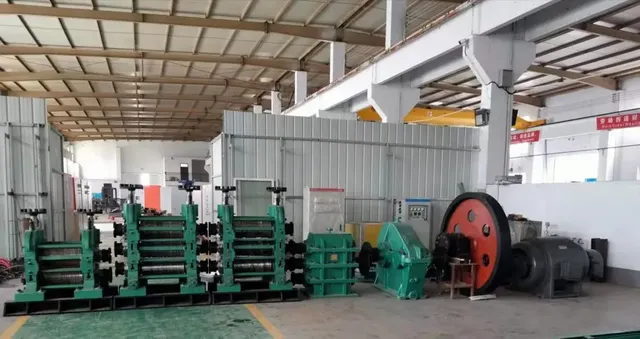From Smelting to Casting
- The Continuous Casting and Rolling (CCR) Concept
Traditionally, steel billet production was a multi-step process involving separate smelting, casting, reheating, and rolling phases. Continuous casting and rolling revolutionizes this workflow by directly linking molten steel casting with the rolling process, eliminating the need for intermediate cooling and reheating.
Key operational flow:
Smelting – Scrap steel or raw iron is melted in an electric arc furnace or induction furnace.
Continuous Casting – Molten steel is cast into billets without full solidification breaks.
Hot Direct Rolling – Billets are rolled immediately while still at optimal temperature.
Finishing & Cooling – Rebars are shaped, cooled, and prepared for bundling.
This integration not only speeds up production but also significantly reduces energy loss, creating a leaner, more sustainable workflow.
- Why Upstream Integration Matters for Global Buyers
For buyers in Africa, Southeast Asia, the Middle East, and South America—regions where infrastructure development is booming—investment in CCR technology can be a game-changer. Upstream integration offers:
Lower Operating Costs – No reheating furnaces required between casting and rolling.
Higher Productivity – Continuous operation reduces downtime and increases throughput.
Improved Metallurgical Quality – Reduced oxidation and temperature drop help produce stronger, more uniform rebars.
Smaller Plant Footprint – Integration reduces the number of standalone equipment units.
Faster ROI – Energy savings and higher yield accelerate payback.
- The Role of Supporting Equipment
A CCR line’s success depends not only on the main mill but also on well-matched rebar mill supporting equipment:
Billet Cutters – Ensure precise cutting for uniform lengths.
Automatic Cooling Beds – Optimize controlled cooling for consistent mechanical properties.
Bundling & Packing Machines – Prepare finished rebar for international shipment.
Scrap Handling Systems – Improve raw material recycling efficiency.
Each of these components plays a critical role in maximizing operational efficiency and ensuring smooth integration.
- Strategic Selection Tips for Overseas Buyers
When choosing a CCR-based rebar rolling mill production line, international buyers should consider:
Capacity Alignment – Match output capacity to regional market demand to avoid underutilization.
Energy Efficiency Ratings – Prioritize equipment with proven energy-saving features.
Automation Level – Higher automation reduces labor costs and improves quality consistency.
After-Sales Support – Ensure the supplier offers training, remote diagnostics, and spare parts availability.
Compliance Standards – Verify the mill meets international standards like ASTM, BS, or DIN for rebar production.
- Case Study: ROI Boost Through Upstream Integration
A mid-sized steel plant in East Africa replaced its traditional billet reheating system with a full continuous casting and rolling setup.
Results within the first year:
Energy Savings – Reduced fuel consumption by 35%.
Production Increase – Output rose by 20% without increasing workforce size.
Market Advantage – Faster delivery times attracted larger infrastructure contracts.
- Action Steps for Buyers
To leverage CCR benefits effectively:
Conduct a Feasibility Study – Assess raw material availability, energy costs, and market size.
Engage a Full-Line Supplier – Work with manufacturers capable of delivering a complete, integrated CCR system.
Plan for Scalability – Choose designs that allow for future capacity expansion.
Negotiate Technical Support Packages – Secure long-term training and service agreements.
- Conclusion
From smelting to casting, upstream integration through continuous casting and rolling is more than just an equipment upgrade—it is a strategic move toward higher efficiency, lower costs, and faster market responsiveness. For efficiency-focused buyers in competitive international markets, the CCR approach delivers measurable advantages that translate directly into business growth.
rebar rolling mill production line
continuous casting and rolling
rebar mill supporting equipment
billet rolling mill
steel plant integration
